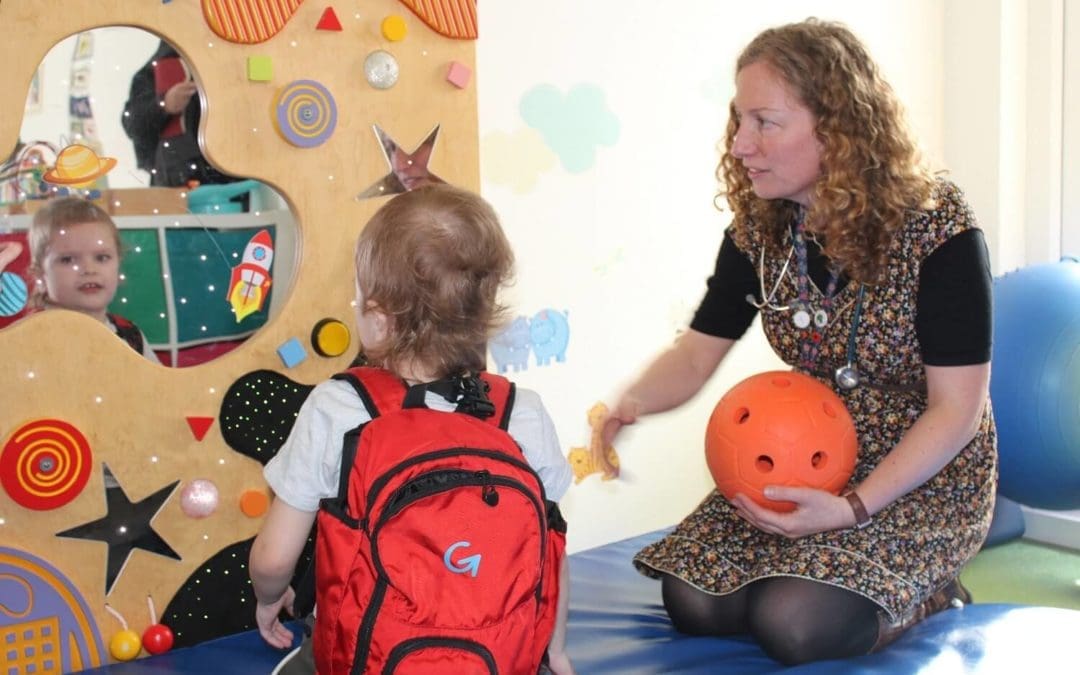Dr Emily Harrop, Consultant in Paediatric Palliative Care and Interim Medical Director at Helen & Douglas House who contributed to this paper, was asked to participate in a two-day working party of an international group of experts to talk about communicating with children which was held in 2017. She became involved as a result of involvement in the NICE Guidelines ‘NG61 End of Life Care for Infants, Children and Young Adults’, particularly the sections on communication, information sharing and advance care planning and she made a presentation about this to the working party.’
Dr Emily said ‘The group working on this paper identified that trust, openness and honesty was critical when communicating with a child about a life-shortening condition and this is exactly how we have always communicated with the children we care for at Helen & Douglas House. We know from experience, that if we don’t operate in this way, the child may become distressed and their symptoms can increase.’
‘I am delighted that these communication guidelines reflecting the principles we use at Helen & Douglas House, will be implemented in different healthcare settings, including in general hospitals not just in at specialist hospices like ours, across the globe.’
The global prevalence of life threatening conditions in children and parents makes it an urgent priority to develop child-focused communication guidelines for healthcare professionals to support families in their time of need.
On 14 March 2019, The Lancet published two ground-breaking papers collating evidence and global expertise to derive core communication principles to assist healthcare professionals in communicating with children about their own life threatening condition, or that of a parent.
These papers, led by a team at the University of Oxford, highlight the importance of communicating with families about life threatening conditions in ways that can make a real difference to the traumatic circumstances in which families find themselves.
Professor Alan Stein, senior author and Child and Adolescent Psychiatrist,University of Oxford, said ‘This important Lancet series offers principles to guide conversations between health professionals, children and their parents about life threatening illness. There are huge time pressures on healthcare professionals and concerns about how to get it right for families.’
One of the most daunting challenges that parents and healthcare professionals face is to tell a child that they or their parent has as a life threatening diagnosis. Parents would do almost anything to shield their child from distress, yet sometimes this can’t be avoided. Evidence shows that talking with children about illness helps with family relationships and wellbeing.
Professor Stein continues, ‘Having guidelines makes it possible for health care professionals with different experience and training in both high, and low and middle income countries, to initiate these critical conversations to provide effective communication with parents and children.’
Sensitive communication and language tailored to the child’s age and understanding matters enormously to children and their families regardless of their life circumstances. Parents are understandably uncertain about how, when and what to tell their children about the condition and are fearful of the impact. Yet children are often aware that something is seriously wrong and want honest information. Clearly, this will be different for a 6-year-old or a 14-year-old, so guidelines to enable these critical conversations and provide effective communication with parents and children is key.
The series highlights that:
– The moment that the diagnosis is conveyed is often remembered vividly for many years and signals the beginning of a new trajectory for the family.
– When a child has a life threatening condition there are practical reasons why the child should know, for example, if they need to take medicine or cooperate with treatment.
– For the family, being able to talk openly about a life-threatening condition allows them to better support one another and find the help they need.
– When a parent has a life threatening condition children even at a young age notice changes at home and alterations in their parents’ behaviour.
– Children want to know what is going on and in the absence of information they often ‘fill in the blanks’ by themselves to try and make sense of what they are seeing. This can sometimes be worse than reality, especially if the child believes they are responsible in some way.
– These structured guidelines will enable healthcare professionals to successfully navigate this difficult and emotionally challenging task.
